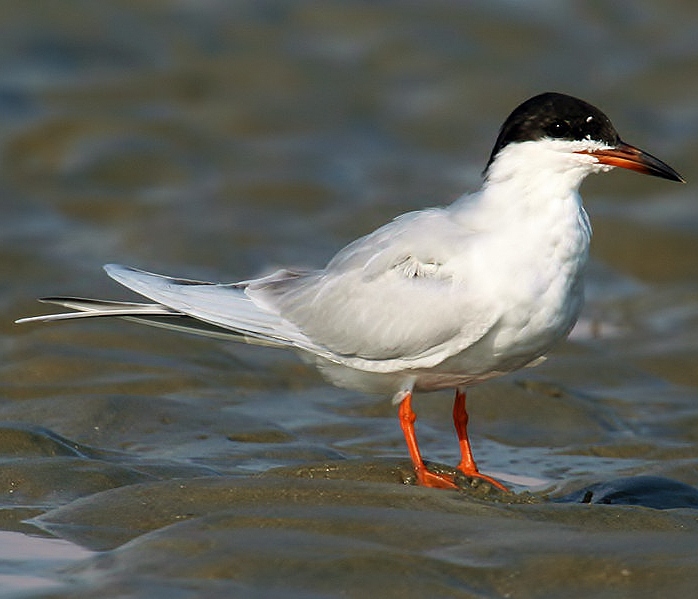 |
| Photo by Dick Daniels (Wikipedia) |
Common name:
Forster’s tern (en); andorinha-do-mar-de-Forster (pt); sterne de Forster (fr); charrán de Forster (es); Forsterseeschwalbe (de)
Taxonomy:
Order Charadriiformes
Family Sternidae
Range:
This species breeds in southern Canada and the northern United States, wintering in the south-eastern and coastal south-western United States, along the eastern and western coast of Mexico, in Central America and the Caribbean.
Size:
These birds are 33-36 cm long and have a wingspan of 64-70 cm. They weigh 130-190 g.
Habitat:
The Forster’s tern breeds in freshwater lakes, potholes, inland and coastal marshes and occasionally on sand, mud or rocky islets. Outside the breeding season they are found foraging on lakes, streams and estuaries, favouring waters less than 1 m deep.
Diet:
They feed on small fish, crustaceans and aquatic insects.
Breeding:
Forster’s terns breed in April-July. They form loose breeding colonies of 5-250 pairs. Both sexes build the nest, a small cup made of plant materials or a scrape on muddy or sandy soil, usually placed on a small islands, lakeside or among floating and emergent vegetation. The female lays 2-5 eggs which are incubated by both sexes for 23-25 days. The chicks are fed by both parents and fledge 3-4 weeks after hatching.
Conservation:
IUCN status – LC (Least Concern)
This species has a very large breeding range and a population estimated at 130.000-160.000 individuals. the population has undergone a small increase over the last 4 decades, but it may be vulnerable to habitat loss due to the degradation, development, draining, and filling or flooding of wetland habitats, as well as human disturbance.







